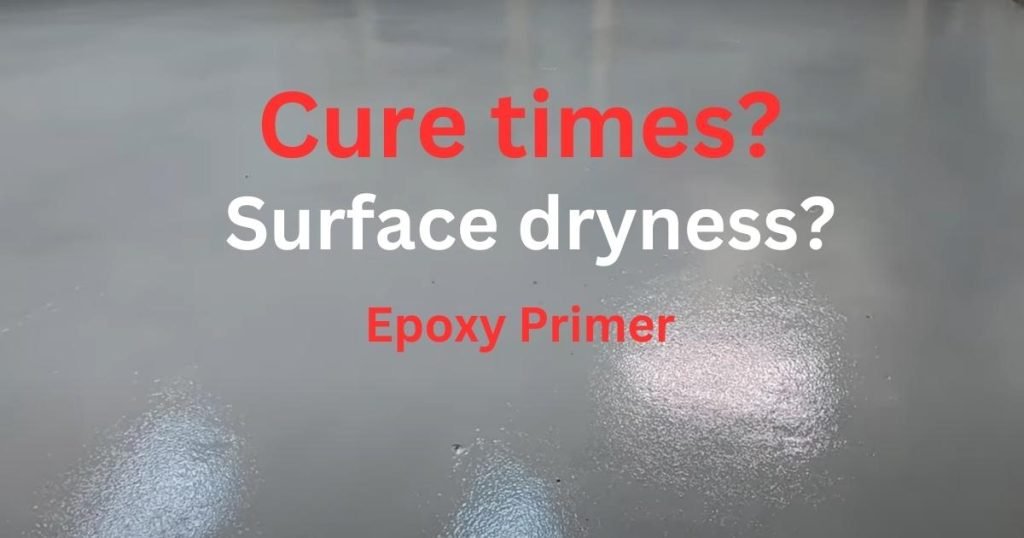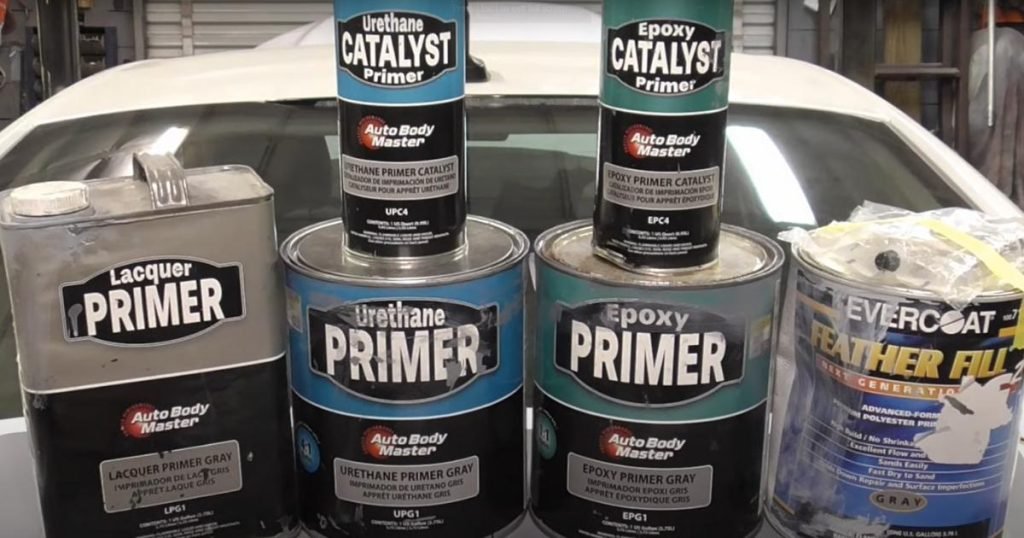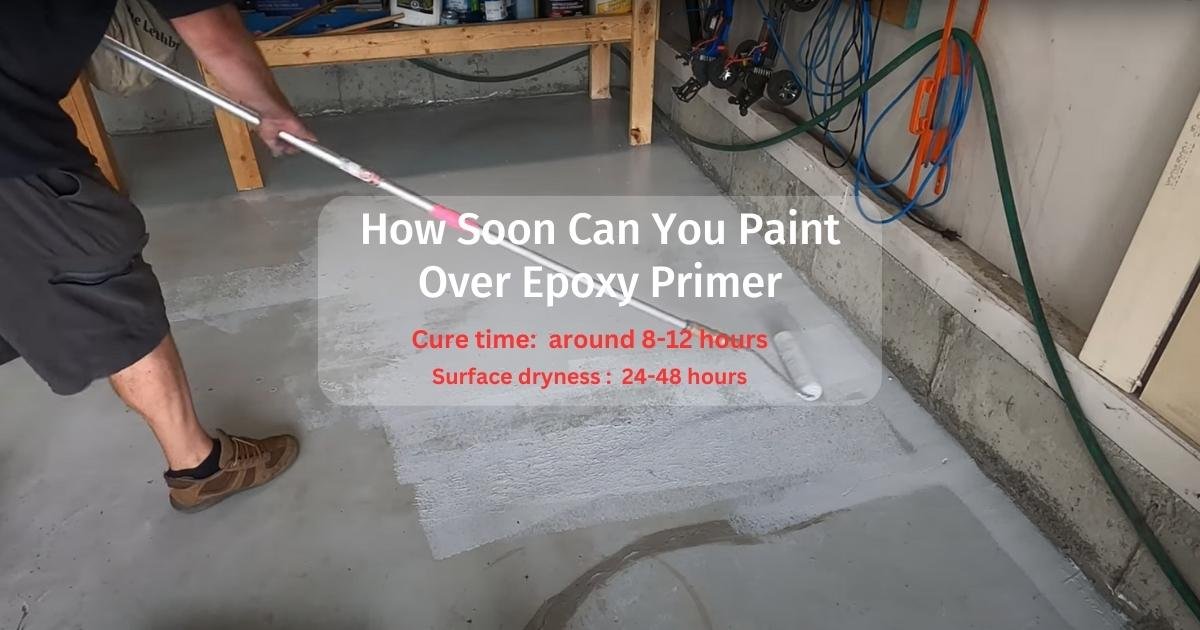Did you know that the global paint market size was valued at $146.2 billion in 2020?
With such a massive industry, it’s no surprise that many people are curious about how soon they can begin painting over epoxy primer.
Epoxy primers have become increasingly popular due to their durability and resistance to chemicals, water, and abrasion.
However, figuring out when it’s safe to apply paint on top of an epoxy primer can be tricky.
Many factors come into play, including temperature and humidity levels, curing time, and the type of paint you plan on using.
Let’s dig deeper into this topic and discover helpful tips for getting the best results for your next paint job after epoxy primer.
Factors That Affect Curing Time
Humidity effects, surface preparation, thickness considerations, temperature impact, and proper ventilation can influence epoxy primer’s curing time.
Humidity levels above 85% can slow down the drying process and affect the overall quality of the finish. Therefore, it is essential to ensure that humidity levels are within an acceptable range before applying epoxy primer.
Surface preparation also plays a crucial role in determining how long it takes for the primer to cure. Any contaminants or residues on the surface must be removed as they may interfere with adhesion and cause bubbling or cracking.
Additionally, thicker layers of epoxy take longer to dry compared to thinner coatings due to increased solvent evaporation times.
Temperature impact is another crucial factor affecting curing time; higher temperatures generally accelerate curing, while lower temperatures tend to prolong it.
Lastly, adequate ventilation is necessary during application and throughout the curing process to avoid potential health hazards from fumes and promote efficient airflow.

How Soon Can You Paint Over Epoxy Primer? Recommended Curing Times
There are a few factors to consider when determining how soon you can paint over epoxy primer:
- Cure time – The epoxy primer needs time to fully cure before applying another coat of paint. The cure time will depend on the specific product you used but is typically at least overnight (around 8-12 hours) for most epoxy primers. It’s best to follow the recommendations on the product packaging. If you paint over the primer before it has fully cured, it can affect adhesion and final results.
- Surface dryness – Even after the epoxy primer has cured, you must ensure the surface is dry before painting. This usually means waiting at least 24-48 hours. The primer should feel hard and no longer tacky to the touch. If the surface still feels soft or wet, it’s not ready for another coat of paint.
We should look at various epoxy products to understand their recommended curing times.
Let’s also look at how to determine when the epoxy primer has fully cured.
Related Post
You can check Can I cure epoxy resin with UV light
You can also check How to get rid of epoxy smell
Curing Time For Different Epoxy Products
Regarding epoxy primer, the curing time can vary depending on the product used.
The drying process of an epoxy coating is affected by various factors such as coating thickness, temperature impact, and humidity effect.
Following the manufacturer’s instructions for recommended curing times and proper surface preparation before painting over the cured epoxy primer is essential.
Please comply to avoid uneven paint adhesion or peeling.
Therefore, allowing ample curing time for your chosen epoxy primer is crucial before proceeding with subsequent coatings.
Determining The Full Cure Of Epoxy Primer
Now that we have discussed the importance of following recommended curing times for epoxy primer, it’s equally crucial to ensure that the primer is fully cured before proceeding with any other coatings.
The methods for testing and checking for a complete cure can vary depending on the product used. Some manufacturers may provide specific instructions or recommend certain tools for verifying a full treatment. However, some general ways exist to determine if the epoxy primer has fully cured.
One way is by performing a finger test where you lightly touch the surface with your fingertips and observe whether it leaves an impression. Another method is using a solvent rub test, where you apply a small amount of rubbing alcohol or lacquer thinner onto the surface and check for any softening or discoloration.
Ensuring the epoxy primer has fully cured prevents issues such as poor adhesion, bubbling, or flaking in subsequent coats.
Paint Types To Use With Epoxy Primer
When it comes to painting over epoxy primer, choosing compatible paints that meet the adhesion requirements and drying time is essential.

Some of the best paint types include polyurethane, acrylic urethane, and enamel.
Polyurethane offers excellent durability and chemical resistance while providing a high gloss finish.
Acrylic urethane is known for its color retention and weather ability, making it ideal for exterior applications.
Enamel provides good adhesion and is suitable for industrial settings where surfaces are exposed to harsh chemicals or physical wear.
Before applying any paint type, surface preparation is critical. Surfaces should be clean, dry, and free of contaminants such as oil or grease.
It’s also recommended to scuff sand the epoxy primer before applying paint to ensure proper adhesion.
Additionally, consider the desired level of gloss when selecting a paint type.
Choosing the right paint type to use with epoxy primer can significantly impact the longevity and appearance of your project.
You can achieve optimal results without compromising quality or performance by considering compatibility, adhesion requirements, drying time, gloss level, and surface preparation.
Tips For Successful Painting Over Epoxy Primer
Imagine you’ve prepped the surface, applied a thin coat of epoxy primer, and now it’s time to paint. Choosing the right color is crucial for a successful finish.
However, before diving into painting, remember that drying time is essential. Wait until the primer has cured entirely before applying additional coats or sanding techniques.
When sanding, use an appropriate technique, as incorrect methods can damage both the primer and your final coat.
Following these tips and waiting for proper curing times between coats, you’ll achieve optimal adhesion of your final paint layer over your epoxy primer basecoat.
Common Mistakes To Avoid When Painting Over Epoxy Primer
When it comes to painting over epoxy primer, timing is critical. But before you even think about applying paint, you should avoid several common mistakes to ensure a successful outcome.
First and foremost, proper surface preparation is crucial. Before applying the primer, ensure the surface is immaculate and free of debris or contaminants.
Additionally, follow the correct mixing ratio for your specific brand of epoxy primer to achieve optimal adhesion and durability.
Another essential factor to consider when painting over epoxy primer is choosing the right type of paint. Not all colors are compatible with epoxy primers, so research beforehand to avoid any potential issues.
Temperature considerations also come into play – ensure you’re working in an environment within the recommended temperature range for both the primer and paint.
Lastly, applying thin coats of paint is essential rather than covering everything in one go. This ensures better adhesion and prevents drips and other imperfections from forming on the surface.
By strictly following these guidelines, you can rest assured that your painted surface will look good for many years without any problems.
Conclusion
In conclusion, painting over epoxy primer is crucial in achieving a high-quality finish for your project. The key to successfully painting over epoxy primer lies in understanding the factors that affect curing time and choosing the right type of paint to use.
Remember to follow recommended curing times and avoid common mistakes such as rushing the process or using incompatible paints.
Properly preparing and priming your surface with epoxy primer ensures a durable and long-lasting finish. So, take your time with painting before allowing sufficient drying time, and choose compatible paint types.
Remembering these tips, you’ll quickly create your perfect finished product.












Your point of view caught my eye and was very interesting. Thanks. I have a question for you.
Really good info can be found on website.Money from blog
I don’t think the title of your article matches the content lol. Just kidding, mainly because I had some doubts after reading the article.
Heya i am for the first time here. I found this board and I to find It truly useful & it helped me out a lot.
I hope to offer something back and aid others like you helped me.
Your article helped me a lot, is there any more related content? Thanks!
Thanks for sharing. I read many of your blog posts, cool, your blog is very good.
Thank you for your sharing. I am worried that I lack creative ideas. It is your article that makes me full of hope. Thank you. But, I have a question, can you help me?
Thanks for sharing. I read many of your blog posts, cool, your blog is very good.
Thank you for your sharing. I am worried that I lack creative ideas. It is your article that makes me full of hope. Thank you. But, I have a question, can you help me?
Nevertheless, it’s crucial to understand the potential well being implications before deciding to make
use of these substances. Steroids may or could
not enhance the dimensions of the skull; the impact is extra often attributed
to human development hormone, which is usually taken in conjunction with anabolic steroids.
As talked about, when gynecomastia seems in bodybuilders, it’s typically brought on by means of anabolic steroids,
corresponding to exogenous testosterone derivatives.
Gynecomastia happens due to the body’s attempt to take away circulating testosterone in response.
True, extra research must be accomplished about what causes steroid
gut. Plus, you are able to do it WITHOUT having
to take care of a Natures steroid alternative intestine.
The thousands of dollars allegedly paid by muscle constructors for meal
plans are often funds for anabolic provides and professionally designed drug cycles.
The Web and the gadgets permitting constant connectivity have
influenced every segment of human life from dating
to the buying of PEDs. A fast seek for anabolic steroids generates
12,500,000 results. Misuse of anabolic steroids could be dangerous to your well being.
The dialog about Dianabol’s security and value is still going.
Prior to the introduction of recombinant hGH in 1985, hGH was solely obtained from cadaver pituitaries.
It was found that the availability was contaminated with
the prion inflicting Creutzfeldt-Jakob disease, which left hGH-abusing athletes
prone to an infection [150]. Recombinant
hGH has eradicated this risk, however poor needle-sharing practices may place bodybuilders in danger for different blood-borne illnesses.
Case reviews within the Eighties and 1990s describe bodybuilders who turned contaminated with HIV
from sharing needles for AAS injection [151–153].
Similar circumstances exist for hepatitis C virus transmission in weightlifters
[154]. The one exception to this was the next chance of nephrocalcinosis in bodybuilders, attributable to veterinary-grade vitamin D injection (1 case per
314 injectors) [113].
Very few pro athletes in the ’40s and early ’50s would even beat the
highest high school athletes at present. Heck, Doug Hepburn grew to become the primary
400lb bencher in the early ’50s, and there are plenty of high schoolers who can bench press over 400lbs now.
When the expertise pool in a sport grows, freakier freaks come out of the woodwork.
Unlike another steroids on the record that are primarily diuretic in nature, Anadrol is estrogenic, thereby inflicting more water retention by the muscle
cells. [newline]You can also be surprised to know that it could assist put up to 50 pounds of muscle mass when used
in multiple cycles and paired with other
sturdy muscle-building steroids. Male customers (even beginners) usually want stronger
doses of Anavar as a result of naturally high testosterone ranges.
As such, they can begin with 15 mg per day of the compound for the primary three weeks and improve it to twenty mg per day for the next three weeks.
If you aren’t an expert bodybuilder, you could need to comply with such low doses
to stop the risk of developing masculine features or look during the cycle.
However, professionals might nicely improve the dose to placed on bulkier muscle tissue
in change for a lack of their feminine options. Not only does this compound assist users put on appreciable quantities of lean muscles, nevertheless it additionally aids the efficient burning of fat reserves located beneath your skin (subcutaneous fat).
Steroids assist scale back body fats whilst they promote muscle development.
A man who features a lot of muscle shortly without
steroids may even tend to add fat. Solely a juicer can get considerably larger within the chest and shoulders while losing fats from his waist.
If you’re new to bodybuilding or are merely on the lookout for a pure different to steroids,
listed here are five muscle-building supplements that may allow you to construct strength and dimension. Some users might endure more critical unwanted facet effects similar to liver harm, hypertension and even cardiac arrest.
In one examine monitoring patients utilizing ecdysterone dietary supplements for 10 weeks, participants skilled vital will increase in muscle mass and energy in comparability with these on a placebo.
Whereas this doesn’t essentially imply it’s as potent as artificial steroids, it does counsel these alternate options can aid in muscle growth.
Researchers have been conducting studies on the several
types of steroids for bodybuilding, and they’ve discovered some promising alternatives.
These substances aren’t your typical anabolic steroids; they’re derived from pure sources and act as agonists, triggering related progress
changes in the body with out the nasty unwanted effects.
Anabolic steroids are merely enhancement medicine which might pace up and improve your outcomes but won’t work should you don’t put
the work in. The prevalence of drug use, especially tobacco, alcohol, and anabolic steroids, was excessive among
bodybuilding athletes. We could not depend on self-reports to examine
anabolic steroid use. Every development made by the steroid chemistry has triggered a parallel elevation of the bodybuilding requirements.
Certainly, steroids allow athletes to hold more weight, build bigger muscle tissue, enhance power and endurance past what is possible without them.
Thanks for sharing. I read many of your blog posts, cool, your blog is very good.
70918248
References:
biggest steroid users
70918248
References:
cutting steroids for sale (teakandtanned.com)
I don’t think the title of your article matches the content lol. Just kidding, mainly because I had some doubts after reading the article.